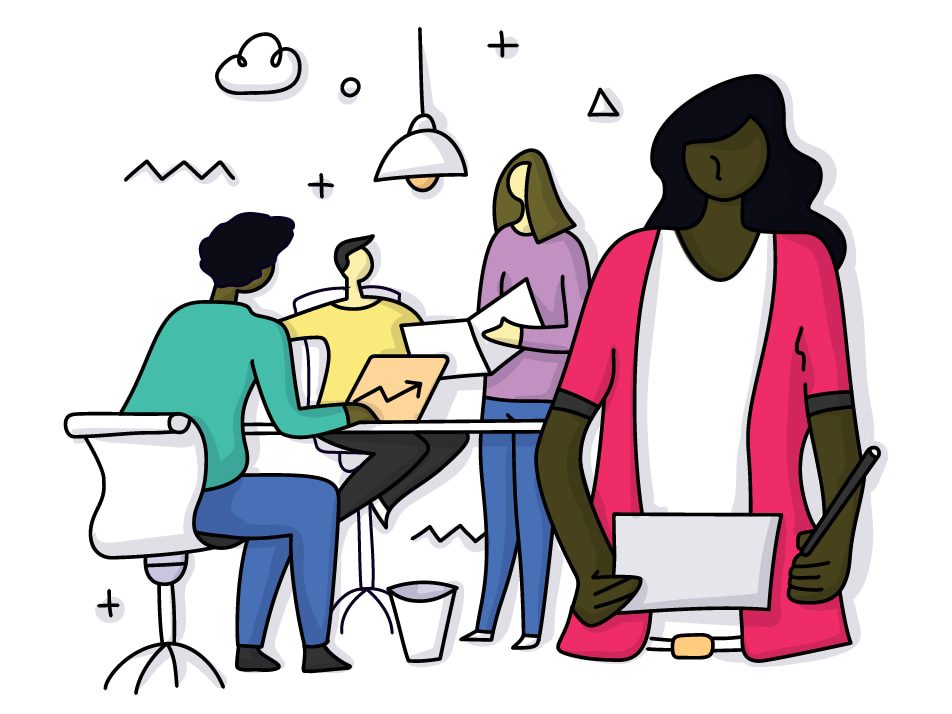The pandemic cast health disparities people experience due to systemic racism and other inequities into sharp relief.
Early on, we learned that messages about COVID-19 prevention and vaccination weren’t reaching everyone. As a state, we faced significant communications barriers due to language, culture, access, technology, housing security, distrust and so much more.
In basic ways, people were being left behind. Communications weren’t going deep enough or solving for barriers to help everyone gather enough information that was relevant to them, addressed their unique concerns and helped them to act.
In partnership with our clients at the Washington State Departments of Health and Commerce, the Washington State Health Care Authority, Better Health Together and more, we developed community-based communications programs to close health gaps and improve access to information in historically excluded and underrepresented communities. After over a year in this work, we want to share some of what we learned.
What is equity-based communications?
Equity-based communications puts integrated strategies to work deep within communities. The result is culturally appropriate, community-based media, outreach and messaging.
For a communications approach to be equity-based, it must:
- Acknowledge systemic racism and inequities exist, and that as a result, some communities suffer a lack of access to resources and information that can help them lead healthier and happier lives.
- Identify disparities and community experiences that can be addressed through culturally-appropriate and accessible communications.
- Follow the expertise and guidance of authentic community members and leaders whose lived experiences and community connections qualify them as trusted message carriers and communications partners.
- Invest in community infrastructure—community organizations, programs and grassroots initiatives—by purchasing community media, funding community-based organizations and compensating message carriers and subject matter experts with sustainability in mind.
- Solve for communications barriers and health gaps priority audiences experience due to access, social determinants of health, systemic racism, historical trauma and more.
Equity-based communications put community first. Unlike some traditional communications models where messages are developed in a silo for target audiences, in an equity-based model, communications are co-developed by communities through close partnership with individuals and organizations who lend their time, energy and expertise to the effort.
As communications strategists, our role is to listen, learn and provide expertise, funding and resources that can be used to elevate community voices and develop meaningful communications that address the unique needs of a community.
Recognizing the strengths and shortcomings of traditional communications models.
Too often, marketers approach audiences top-down and prioritize those with wealth, resources, access and connections. In an effort to create clicks, follows, engagements and influence, communicators run the risk of further privileging the privileged, while those without are left behind.
Even the most strategic and well-intentioned integrated-media campaigns can fall into patterns that perpetuate some of the underlying issues that contribute to inequity. It’s common for communicators to be obstructed by factors that reduce their effectiveness to reach communities in an authentic and empowering way.
How many of these challenges sound familiar?
- Aggressive timelines that force strategists to jump straight into campaign development without time to engage audience members, adequately research audiences, get feedback about messaging or transcreate content to be culturally appropriate for diverse audience segments.
- Campaign plans that underestimate or minimize the diversity of their target audience. Washington State alone has over 3,000,000 citizens who identify as being part of an underrepresented ethnic or cultural community, having a disability or an identify as LGTBQ+. That’s nearly 40% of the population.
- A communications team that does not have the representation or lived experience of the audiences for which they’re developing campaign content, leading to creative that misses the mark, comes off as insensitive or fails to credibly engage a community.
- Limited community partners willing to take part as message carriers as they—based on their experience—may distrust the intent of a campaign designed for them but without them.
As communicators, we can and must do better.
To be equitable and inclusive with our campaigns—especially where there are profound health and human consequences to audiences receiving and engaging with our messages—we must push back, where needed, and hold space for community representation at the planning table and in our communications.
Mile-deep & mile-wide strategies.
If traditional communications models—integrated media campaigns reaching target audiences through paid, earned and owned media channels—are “mile wide” strategies, by contrast, equity-based communications are “mile deep” strategies.
It’s important to recognize that “mile-wide” and “mile-deep” strategies go hand-in-hand for effective communications in historically excluded communities. However, it is through the mile-deep strategies where deeply-resonant and targeted community outreach and engagement can occur through the work of trusted message carriers and culturally-informed communications.

Our opportunity to do better.
By practicing equity-based communications, your campaigns and communications programs will:
- Shape a more equitable future. Community-based organizations have insight into areas of need where a strategic effort can do the greatest good, and how that investment can help them build more infrastructure to enact change. Including them in solving for problems that affect their community members is an important step towards greater equity in health, education, the environment and more.
- Build trust and long-term relationships. Community-based partners are deeply embedded and trusted by the audiences you’re working to reach. Not only will you have the opportunity to learn from them first-hand, but these relationships can help you reach audiences in current campaigns and for years to come.
- Achieve better outcomes for all. When communities lead inclusive communication efforts, they are more effective in creating, understanding and driving sustainable behavior change. Through the work, communication strategists grow in their knowledge and understanding of the audiences they work with and in turn, help transform systems and dismantle systemic racism.
The opportunity to reach people in a more equitable way transcends the challenges of COVID-19 — we believe this approach is one that will help change behavior, strengthen relationships and make our communities stronger.
The great news? This approach is working. Through early monitoring and evaluation, we’re learning from our community partners that this approach is not only creating reach, conversation and engagement, but also resulting in higher vaccination of community members. They have told us that these equity-based programs have been essential to helping them surface and meet the needs of their unique communities in ways traditional advertising and outreach fall short.
Stay tuned for more from our team on practicing equity-based communications and in the meantime, learn more about our community-outreach partnership with the Washington State Department of Health.

